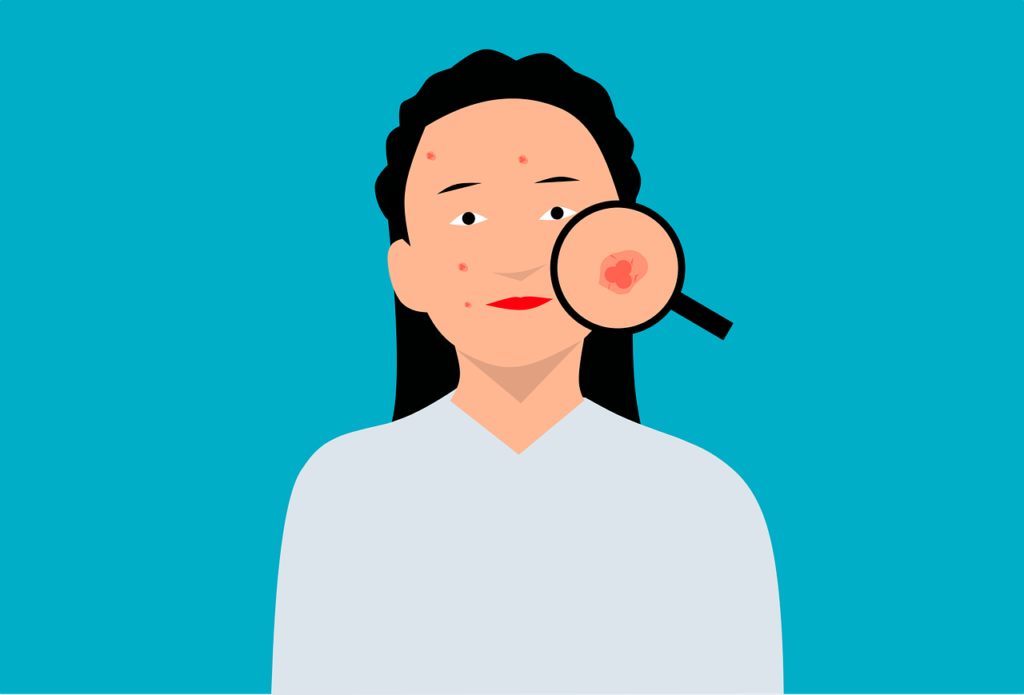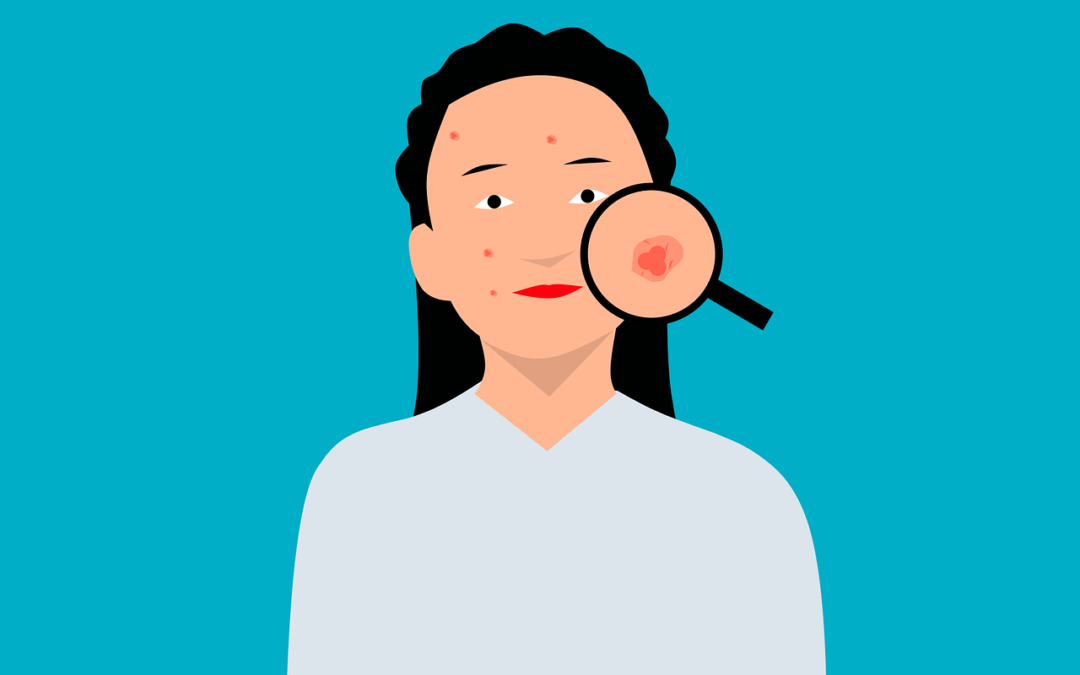Views: 3
If you’ve ever struggled with acne, you may have come across various pieces of advice on what could be causing those pesky breakouts. However, there’s one possible culprit that often goes unnoticed – your dairy consumption. Yes, you heard it right. While it may seem surprising, numerous studies have suggested a potential link between dairy products and acne. In this article, we will explore this intriguing connection, providing you with a deeper understanding of how what you eat might be influencing your skin’s health. So, grab a glass of almond milk and let’s dig into the fascinating relationship between dairy and acne.
The Link Between Dairy Consumption and Acne
Overview of Acne
Acne is a common skin condition that affects millions of people worldwide. It is characterized by the occurrence of pimples, blackheads, whiteheads, and other blemishes on the face, back, and chest. Acne can be emotionally distressing, impacting self-esteem and overall well-being. While the exact cause of acne is still not fully understood, several factors, including genetics, hormones, and lifestyle choices, can contribute to its development.
Understanding Dairy Consumption
Dairy products are a staple in many people’s diets, providing essential nutrients such as calcium, protein, and vitamins. However, recent research has suggested a potential link between dairy consumption and acne. This has led to increased interest in understanding the relationship between the two and its implications for acne management.
The Acne-Dairy Connection: Evidence and Research
Multiple studies have explored the potential relationship between dairy consumption and acne. While the results are not yet conclusive, several mechanisms have been proposed to explain the potential link.
1. Hormonal Factors
Hormonal imbalances play a significant role in acne development. Fluctuations in hormones, such as androgens, can trigger the overproduction of sebum, an oily substance that clogs the pores and leads to the formation of acne lesions. Dairy products, particularly milk, contain naturally occurring hormones, such as estrogen, progesterone, and testosterone, which may influence the hormonal balance in the body.

1.1 Hormones in Dairy Products
It has been found that commercially produced cow’s milk may contain elevated levels of hormones due to the use of hormonal treatments in dairy farming practices. These hormones can potentially disrupt the natural hormonal balance in the body, leading to increased sebum production and acne development.
1.2 Insulin-like Growth Factor-1 (IGF-1)
Another hormone found in dairy products is insulin-like growth factor-1 (IGF-1). This hormone is naturally present in cow’s milk and has been shown to stimulate the production of androgens, which can exacerbate acne symptoms. Additionally, high levels of IGF-1 have been associated with increased sebum production and inflammation, both of which contribute to the formation of acne.
2. Inflammatory Response
Inflammation is a key factor in acne development. Dairy products, particularly milk, contain proteins that can trigger an inflammatory response in some individuals. This immune response can lead to the formation of acne lesions and worsen existing ones.
2.1 Milk Protein
Whey and casein, two types of milk protein, have been shown to have inflammatory effects on the body. These proteins can potentially increase the production of pro-inflammatory cytokines, leading to an aggravated inflammatory response in the skin. This can contribute to the development of acne and may explain why some individuals experience breakouts after consuming dairy products.

2.2 Dairy Allergies and Sensitivities
Some people may be allergic or sensitive to specific components in dairy products, such as lactose or certain proteins. These allergies or sensitivities can manifest as skin reactions, including acne breakouts. Individuals who suspect a correlation between their dairy consumption and acne may consider getting tested for allergies or sensitivities to dairy components.
3. Milk Composition
The composition of milk can vary depending on factors such as fat content and processing methods. These variations in milk composition may influence the potential impact of dairy consumption on acne.
3.1 Skim Milk vs. Whole Milk
Research suggests that skim milk may have a stronger association with acne compared to whole milk. Skim milk has a higher glycemic index, which means it raises blood sugar levels more quickly than whole milk. High glycemic load has been linked to increased sebum production and acne development.
3.2 Beneficial Components in Milk
While there are potential negative effects of dairy consumption on acne, it is also important to note that milk contains beneficial components. Milk is a good source of vitamins A and D, both of which are essential for maintaining healthy skin. Additionally, milk proteins like whey and casein provide important amino acids that support overall skin health.

4. Other Factors
While hormones and inflammatory responses play a significant role in the acne-dairy connection, other factors should also be considered.
4.1 High Glycemic Load
Aside from milk composition, the overall glycemic load of one’s diet may also contribute to acne development. High glycemic foods, such as refined carbohydrates and sugary snacks, can spike blood sugar levels and potentially worsen acne symptoms. Balancing the glycemic load in one’s diet may be beneficial for acne management.
4.2 Artificial Hormones
In addition to naturally occurring hormones in dairy, some dairy products, especially those originating from conventionally raised dairy cows, may contain artificial hormones. These hormones can further disrupt the natural hormone balance in the body and potentially exacerbate acne symptoms.
4.3 Gut Health and Microbiota
Emerging research suggests that the health of the gut microbiota may play a role in acne development. The consumption of dairy products, which can impact gut health and microbiota diversity, may indirectly influence acne symptoms. Future studies will further explore this fascinating connection.
5. Contradictory Evidence
While some studies have suggested a link between dairy consumption and acne, other research shows contradictory findings. It is important to consider these inconsistencies and delve deeper into the limitations and confounding factors that may influence the interpretation of the results.
5.1 Studies Suggesting No Link
Some studies have found no significant relationship between dairy consumption and acne. These studies often report that the association varies depending on individuals and their specific susceptibility to acne triggers. It is crucial to recognize that acne development is a complex process influenced by multiple factors.
5.2 Limitations and Confounding Factors
Several limitations and confounding factors can affect the interpretation of studies examining the acne-dairy connection. Factors such as study design, sample size, participant demographics, and dietary habits can influence the results. More research is needed to address these variables and provide a clearer understanding of the potential link.
6. Dairy Alternatives
For individuals who suspect a relationship between dairy consumption and acne or wish to explore alternatives, there are several options available.
6.1 Plant-based Milks
Plant-based milks, such as almond milk, soy milk, and oat milk, can be substituted for dairy milk. These alternatives are generally devoid of the hormones and proteins found in cow’s milk, making them potential options for individuals concerned about the impact of dairy on acne.
6.2 Dairy Supplements and Probiotics
Supplements that provide the beneficial components of dairy, such as vitamins A and D, may be considered for individuals avoiding dairy. Probiotics, which support a healthy gut microbiota, may also be beneficial for managing acne symptoms indirectly. However, it is essential to consult with a healthcare professional before starting any new supplements.
Conclusion
While the link between dairy consumption and acne is not yet fully understood, emerging evidence suggests a potential association. Hormonal factors, inflammatory responses, milk composition, and other influences may contribute to acne development in some individuals. However, it is important to recognize that acne is a multifactorial condition influenced by various factors. Further research is needed to provide more conclusive evidence and guide acne management strategies. If you suspect a correlation between your dairy consumption and acne, consider speaking with a healthcare professional to explore potential dietary modifications or alternative options.

